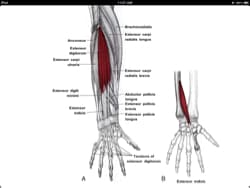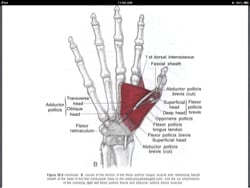I started working with a client a couple of months ago who had (what seems to be more and more common) extremely limiting hand pain. The initial success in dealing with pain that had existed for close to five years was excellent. Intensive treatment of the forearms, as has been underlined in other articles, quickly brought this under control. So we started some barbell training, and continued with treating other areas that had frozen up over the course of five years of inactivity. Shoulders, calves, biceps, they all were attended to; however the pain in the thumbs didn’t seem to change. So my first folly befell me, I assumed it was simply an issue of lack of use over five years, surely this was the residual soreness that would attend the use of any area that had been neglected for so long. Within a few weeks it became evident on our weekly visits that the thumbs were not improving. Then suddenly, a mixture of a few activities had them becoming worse, I was stumped. Direct treatment mixed with work on the forearms wasn’t solving this, we needed something better. However I didn’t know what it was.
Four years ago at two in the morning I was on my motorbike and was rear ended at a red light. A tumble and a hard landing had left my wrists a disaster. It had been through this that I had had first hand experience with excruciating hand and wrist pain. Climbing had then left me with a host of forearm work to do to remedy and keep finger and pulley injuries from occurring. Thumbs were new.


